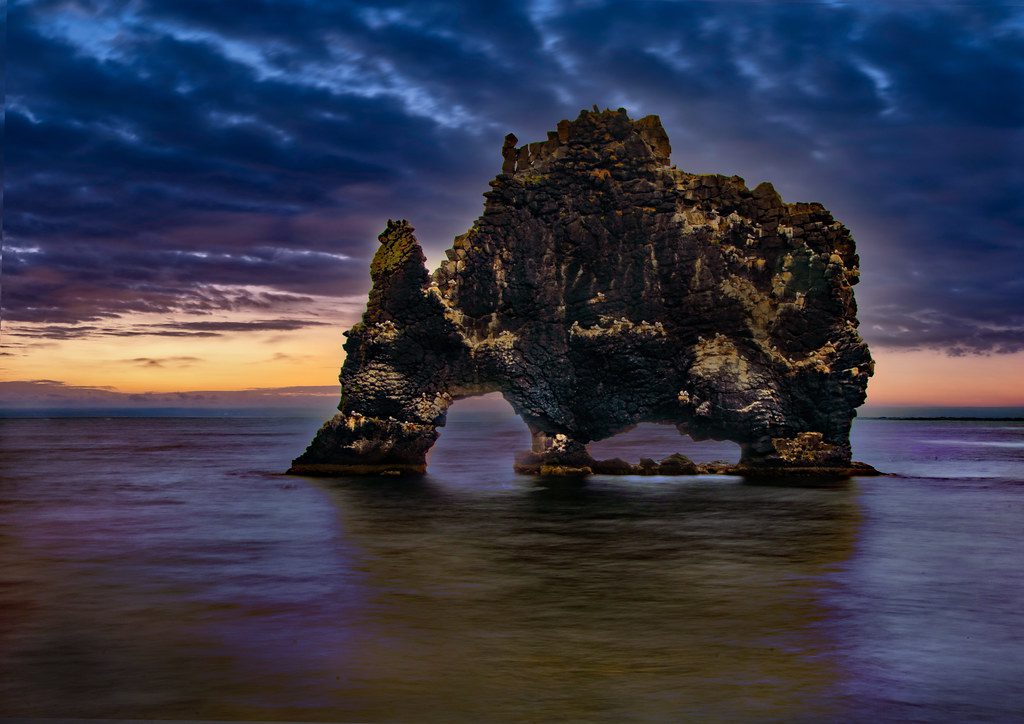Iceland, a land of fire and ice, captivates travelers with its breathtaking landscapes and unique geological features. From cascading waterfalls and dramatic glaciers to bubbling hot springs and volcanic craters, this Nordic island nation is a haven for nature enthusiasts and adventure seekers alike. If you’re planning a trip to Iceland, you’re in for an unforgettable experience. In this article, we’ll delve deeper into the awe-inspiring nature of Iceland, share essential travel tips, and highlight the top places to visit.
Iceland’s Natural Marvels
1. Glacial Wonders
Iceland boasts some of the most stunning glaciers in the world. These immense ice caps are breathtaking and provide incredible opportunities for exploration and adventure. One of the crown jewels is the Vatnajökull Glacier, Europe’s largest glacier. Encompassing a vast area, it offers mesmerizing ice caves that seem like something out of a fairy tale. These icy chambers, sculpted by nature’s hand, reveal a dazzling world of blue and white that beckons you to step into its frozen embrace. For those seeking a more active experience, glacier hikes are a popular option, allowing you to traverse the glacier’s surface and witness its grandeur up close.
Jökulsárlón Glacier Lagoon is another must-visit glacial wonder. This surreal lagoon is dotted with icebergs of various shapes and sizes, creating a stunning visual spectacle. Visitors can embark on boat tours that take you through the lagoon, allowing you to cruise past these floating ice sculptures while enjoying panoramic views of the surrounding landscape. The interplay of light and ice in this glacial lagoon creates a mesmerizing and ever-changing scene, making it a paradise for photographers and nature lovers alike.
For a unique perspective, head to Langjökull Glacier, where you can explore ice tunnels and caves within the glacier. These man-made ice structures provide an opportunity to delve deep into the heart of the glacier, marveling at the crystalline formations and intricate patterns that adorn the walls. It’s a journey into an otherworldly realm, showcasing the fascinating and delicate beauty that lies beneath the surface.

2. Majestic Waterfalls
Iceland’s rugged terrain has many captivating waterfalls, each with distinct character and allure. Gullfoss, known as the “Golden Falls,” is a prime example of nature’s grandeur. The Hvítá River rushes through a two-tiered cascade, plunging into a dramatic canyon below. The sheer power of the water and the surrounding mist create an ethereal atmosphere that is simply breathtaking. Standing at the viewing platforms, you can feel the raw energy of the falls reverberating through the air—a testament to the untamed forces of nature.
Seljalandsfoss offers a unique experience, allowing you to walk behind the waterfall. This rare perspective gives you an intimate connection with the water as it tumbles from above, and the play of sunlight on the falling droplets creates a shimmering curtain that dances in the breeze. As you venture behind the cascade, you’ll be treated to a hidden world—a magical and serene space.
Skógafoss, with its impressive height and width, is a sight to behold. The waterfall’s thundering roar and the persistent mist that envelops the area contribute to its mystical aura. For the adventurous souls, a stairway to heaven—or, in this case, a stunning view—awaits those who ascend the steps to the top of the falls. The reward is a panoramic vista that stretches far beyond the waterfall itself, showcasing the sprawling beauty of Iceland’s south coast.
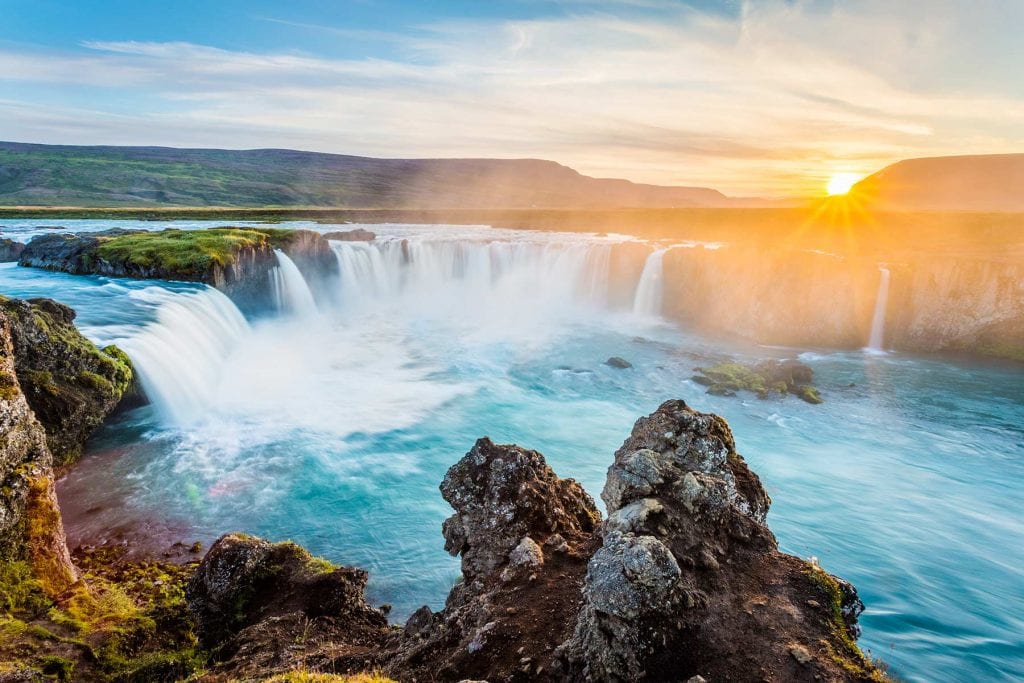
3. Geothermal Marvels
Iceland’s geothermal activity is a remarkable display of the Earth’s inner workings. The Geysir Geothermal Area is a geothermal wonderland that features the famous Strokkur geyser. Every few minutes, Strokkur shoots scalding water high into the air, creating an exhilarating spectacle of steam and boiling liquid against the backdrop of the surrounding geothermal landscape. The anticipation and excitement that build up before each eruption add an element of surprise to the experience, making it a favorite among visitors.
The Blue Lagoon, a geothermal spa nestled within a stunning lava field, offers a different kind of relaxation and rejuvenation. The milky-blue waters are rich in minerals and are said to have therapeutic properties. As you soak in the warm embrace of the lagoon, surrounded by rugged volcanic terrain, you’ll feel a sense of tranquility wash over you. The juxtaposition of the warm, soothing waters and the stark, otherworldly landscape creates a unique and surreal ambiance bound to leave a lasting impression.
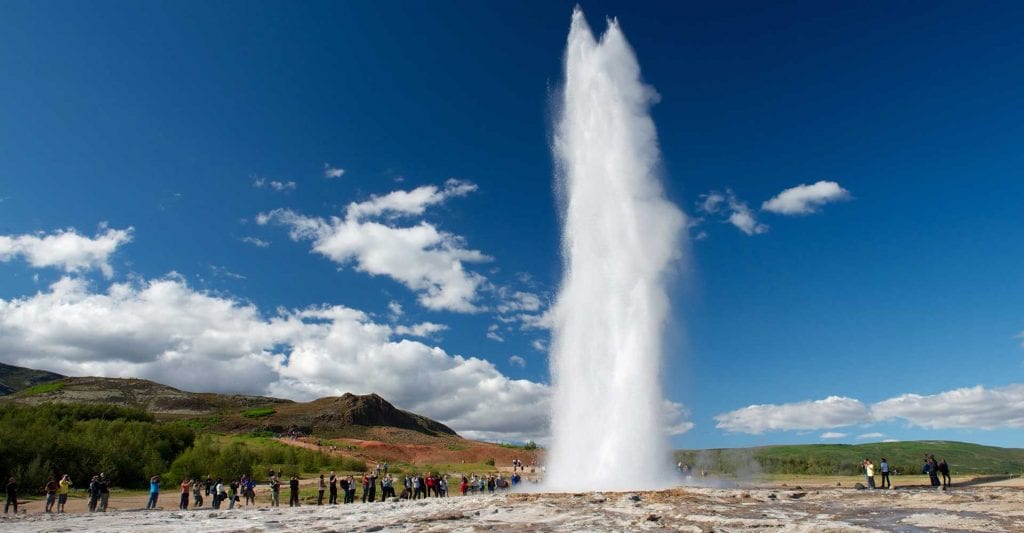
4. Volcanic Landscapes
Iceland’s geological history is marked by volcanic activity, which has shaped its striking landscapes over millions of years. One of the most fascinating places to witness this geological drama is Þingvellir National Park. Here, you can walk between the continents, as the park sits atop the Mid-Atlantic Ridge, where the North American and Eurasian tectonic plates meet. The park’s Almannagjá Gorge offers a glimpse into the forces that have shaped Iceland, with towering cliffs and rocky formations that serve as a reminder of the ongoing rift between the continents. Þingvellir is a geological marvel and a historical one, as it was the site of Iceland’s first parliament, established over a thousand years ago.
For a truly otherworldly experience, venture into Landmannalaugar. This remote and captivating area is famous for its colorful rhyolite mountains, which range from vibrant reds to soothing blues and greens. The striking contrast between the colorful hills and the surrounding black lava fields creates a surreal and captivating landscape. Landmannalaugar is a hiker’s paradise, offering trails that wind through this unique terrain, allowing you to immerse yourself in the stunning hues and textures of the Icelandic highlands. After a rewarding hike, you can soak in the natural hot springs that give the area its name, providing a warm and soothing embrace amid the rugged beauty.
Askja Caldera offers yet another glimpse into Iceland’s volcanic history. This remote and isolated area is home to a massive volcanic crater formed during an enormous eruption in the 19th century. The stark and barren landscape within the caldera is a reminder of the sheer power and volatility of the Earth’s inner forces. An otherworldly oasis amidst the desolate surroundings is Öskjuvatn, a serene and stunning lake that fills part of the caldera. The contrasting elements of fire and water within Askja’s boundaries create a captivating and almost surreal scene that will leave a lasting impression.
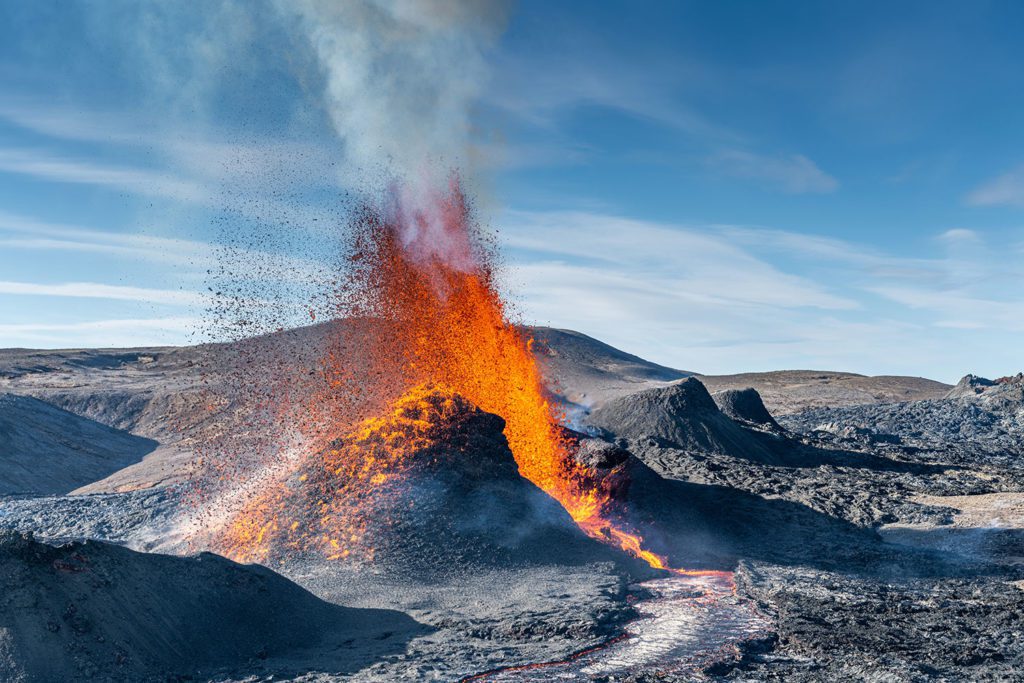
Travel Tips for an Unforgettable Journey
1. Weather and Clothing
Iceland’s weather can be as unpredictable as it is awe-inspiring. Be prepared for rapid changes in weather by packing layers of clothing. A waterproof and windproof outer layer is essential, as is sturdy and comfortable footwear for exploring various terrains.
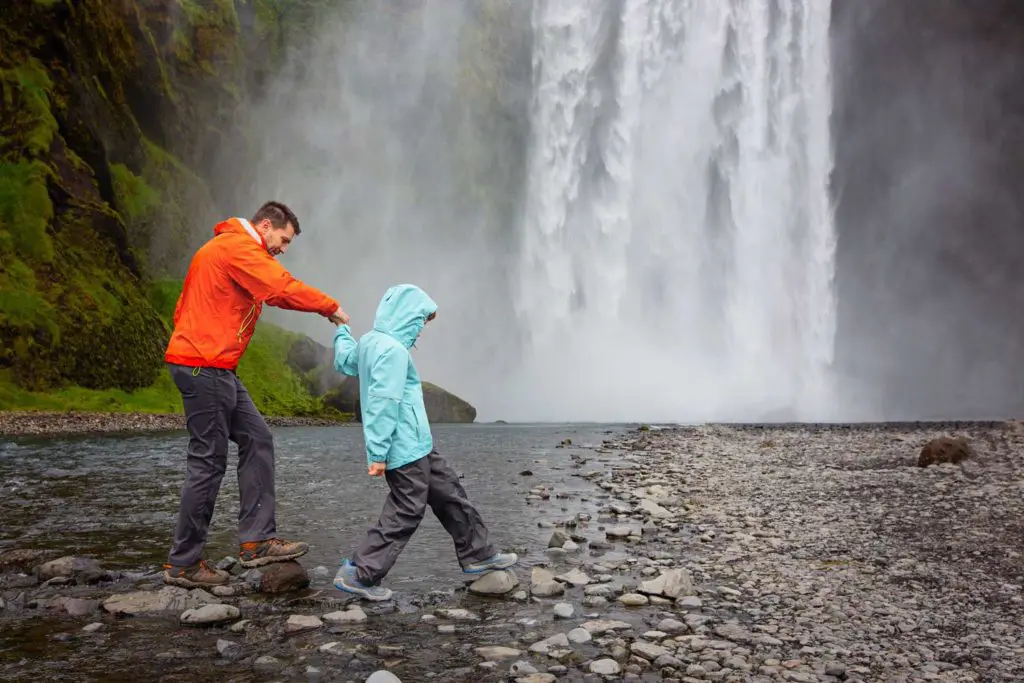
2. Transportation
Consider renting a 4×4 vehicle, especially if you plan to venture off the beaten path and explore the country’s highlands. The highlands are characterized by rough and challenging F-roads that require a robust vehicle. Before starting your journey, familiarize yourself with road conditions and regulations.
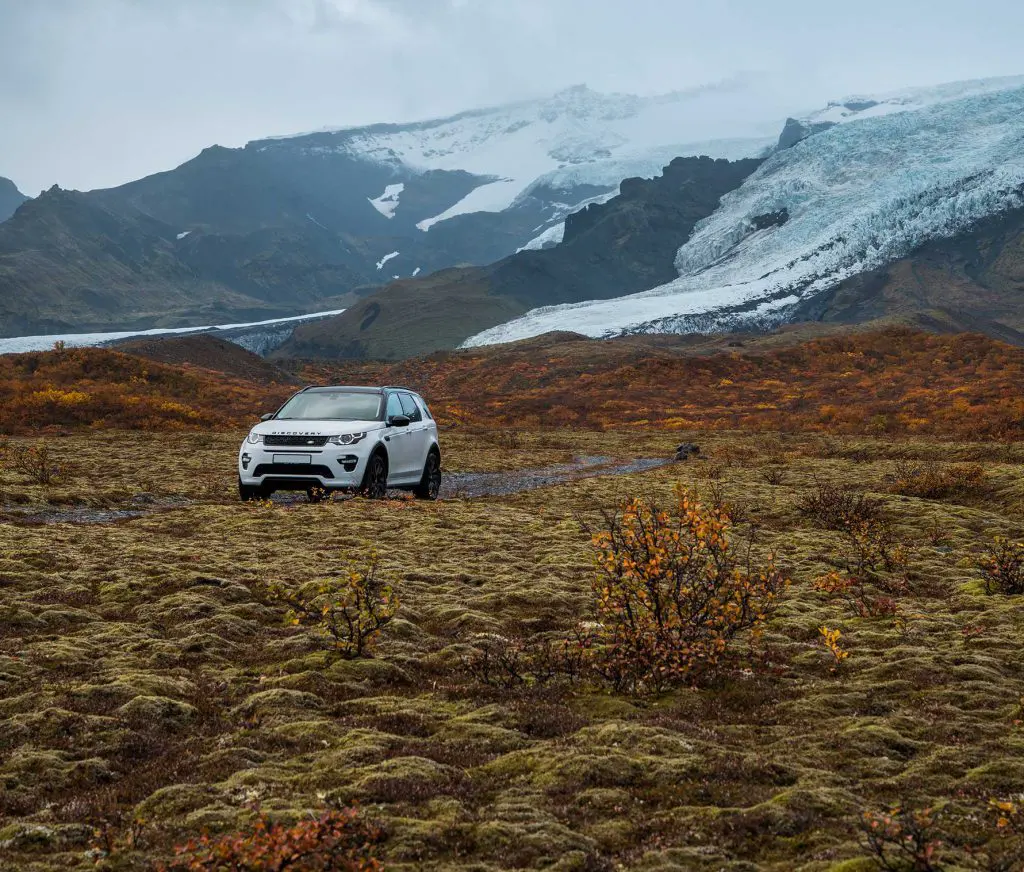
3. Safety First
While Iceland’s natural beauty is inviting, it’s essential to prioritize safety during your explorations. Always stay on marked paths and trails to minimize your impact on the delicate ecosystems. Respect safety warnings and closures, as they are in place to ensure your well-being. The weather can change rapidly, so stay informed about weather forecasts and road conditions. A reliable means of communication, such as a mobile phone with a local SIM card, is essential for emergencies.
4. Local Cuisine
Iceland’s culinary scene offers a unique blend of traditional and modern flavors. Don’t hesitate to try some of the country’s distinctive dishes. If you’re feeling adventurous, sample hákarl, a fermented shark dish that has been a part of Icelandic cuisine for centuries. For a heartwarming and nourishing experience, indulge in a bowl of hearty lamb soup. This comfort food will keep you warm and satisfied during your adventures.

Top Places to See in Iceland
1. Reykjavik: The Capital
Your Icelandic journey often begins in Reykjavik, the country’s vibrant and charming capital city. Despite its relatively small size, Reykjavik packs a punch with its unique blend of modern design, artistic expression, and a lively cultural scene. The city’s iconic Hallgrímskirkja Church, with its distinctive architecture and sweeping views from the top, is a must-visit landmark. Explore the city’s numerous museums, art galleries, and cultural centers to gain insight into Iceland’s history and creative spirit. Indulge in Icelandic delicacies at one of the city’s many restaurants and cafes for a taste of local cuisine. Reykjavik is not just a gateway to Iceland’s natural wonders; it’s a destination offering an array of captivating experiences.

2. The Golden Circle: A Path of Wonders
The Golden Circle is a classic route that showcases some of Iceland’s most iconic natural wonders. Þingvellir National Park, as mentioned earlier, is a highlight of this route, offering a unique opportunity to stand on the meeting point of two tectonic plates. The park’s significance goes beyond its geological marvels—it’s also a place of historical importance, as it was the site of Iceland’s first parliament, Alþingi. Explore the rift valley, walk along the shores of Þingvallavatn (Lake Þingvallavatn), and soak in the sense of wonder that permeates the area.
Another stop along the Golden Circle is the Geysir Geothermal Area. Witnessing the Strokkur geyser erupting in a plume of steam and water is a thrilling experience that connects you with the Earth’s fiery heart. The nearby Gullfoss waterfall, often referred to as the “Golden Falls,” is a testament to the power of nature, as the Hvítá River plunges into a rugged canyon, creating an awe-inspiring spectacle that commands respect and admiration.
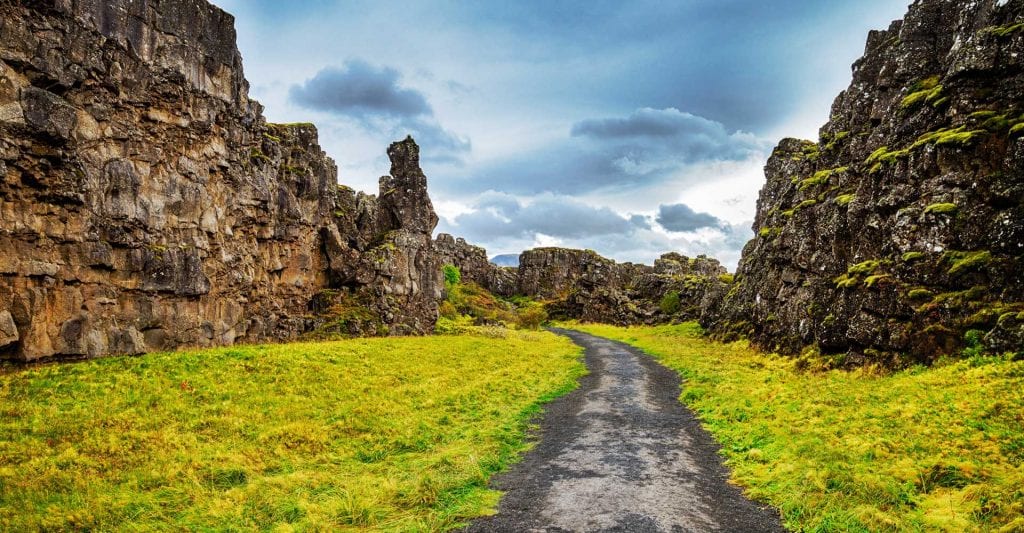
3. South Coast: Where Land Meets Sea
The South Coast of Iceland is a captivating stretch of land that offers a diverse range of natural attractions. One of the most iconic stops along this route is Seljalandsfoss—a waterfall that allows you to walk behind its cascading water curtain. This unique perspective provides a surreal and enchanting experience as you are surrounded by the fall’s sheer force and beauty.
Nearby, Skógafoss awaits with its thunderous roar and mist-filled air. Climb the staircase beside the waterfall to reach the viewing platform at the top, where you’ll be rewarded with a breathtaking panorama that stretches far beyond the falls themselves. Another nearby gem is the Fjaðrárgljúfur canyon, a hidden gem that showcases the power of water as it has carved its way through the landscape over millennia.
The South Coast is also home to black sand beaches that stand as a testament to Iceland’s volcanic origins. Reynisfjara Beach is a destination known for its unique basalt columns, sea stacks, and the Reynisdrangar basalt sea stacks that rise dramatically from the ocean. However, exercising caution when visiting these beaches is important, as the powerful Atlantic waves can be unpredictable and dangerous.
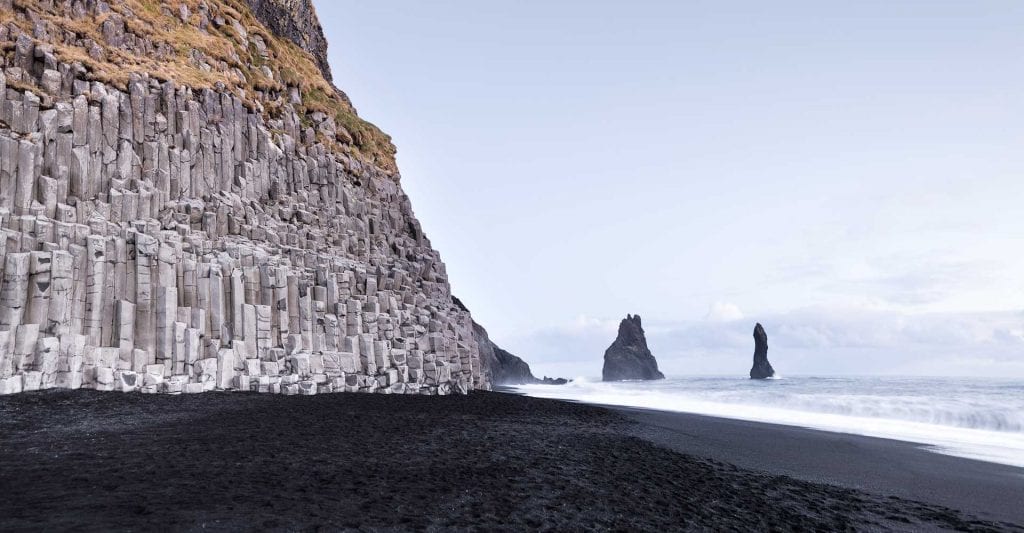
4. East Fjords: A Symphony of Scenery
The East Fjords of Iceland offer a more tranquil side of the country’s natural beauty. Majestic fjords, picturesque fishing villages, and diverse wildlife characterize the region. Driving along the winding coastal roads presents you with ever-changing vistas of steep mountains, serene bays, and charming harbors.
One of the highlights of the East Fjords is Seyðisfjörður, a charming village nestled at the end of a fjord. The colorful houses that line the waterfront create a picture-perfect scene that seems straight out of a storybook. The town is known for its artistic community, and you can explore art galleries and craft shops and enjoy the unique atmosphere that permeates the area.
The East Fjords are also a haven for birdwatching enthusiasts, offering opportunities to spot various seabirds and migratory species. The region’s rugged cliffs and tranquil bays provide an ideal habitat for these winged creatures, and a pair of binoculars will reveal a world of avian activity that adds to the sense of wonder and discovery.

5. Akureyri and North Iceland: Northern Delights
Akureyri, Iceland’s second-largest city, is located in the northern part of the country and offers a different perspective on Icelandic life and landscapes. The town is a hub of culture, with its museums, galleries, and botanical gardens providing a taste of urban charm amidst the surrounding natural beauty.
North Iceland is also home to the magnificent Goðafoss waterfall, often called the “Waterfall of the Gods.” The falls cascade gracefully over a horseshoe-shaped rock formation, and the name itself is derived from an ancient tale in which a chieftain threw his pagan idols into the falls during the country’s conversion to Christianity. This act symbolized the transition from old beliefs to new, and the falls continue to hold a sense of spiritual significance and cultural importance.

Conclusion
Iceland’s untouched wilderness, awe-inspiring landscapes, and unique geological phenomena make it a dream destination for nature lovers and adventurers. The glacial wonders, majestic waterfalls, geothermal marvels, and volcanic landscapes are a testament to the Earth’s raw power and beauty. By following our travel tips and exploring the top places mentioned, you’re embarking on a journey that will undoubtedly leave an indelible mark on your soul. Iceland’s landscapes are not merely sights to behold; they are experiences that will awaken your senses and connect you with the primal forces that have shaped our planet. Start planning your Icelandic adventure today, and prepare to be enchanted by the land of fire and ice.
